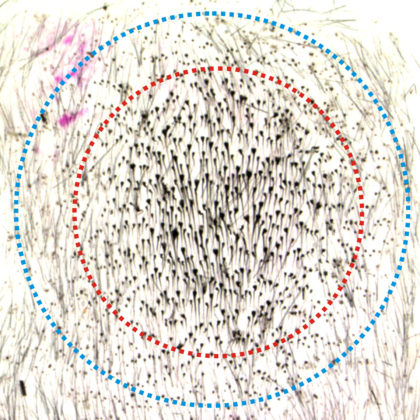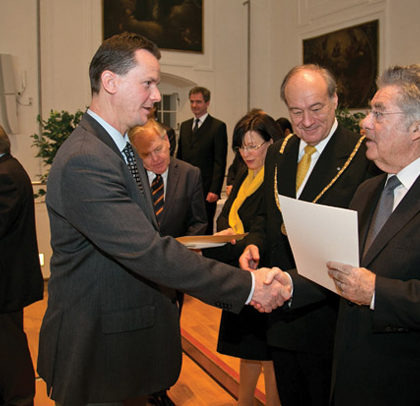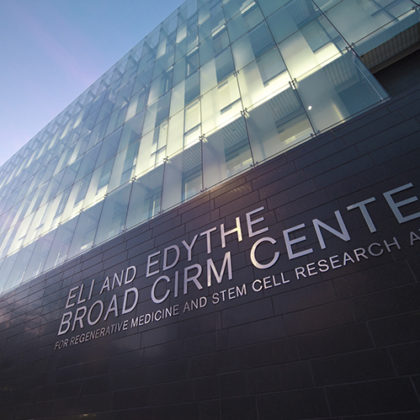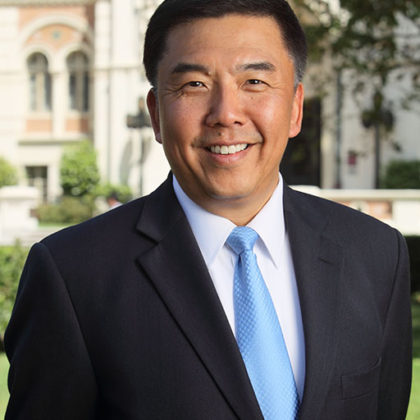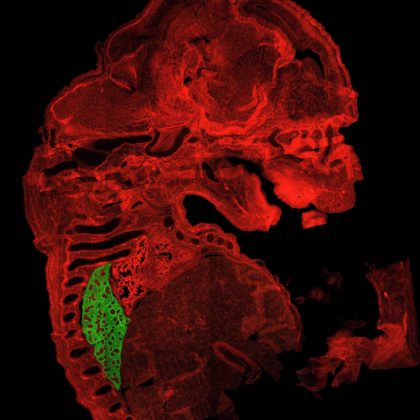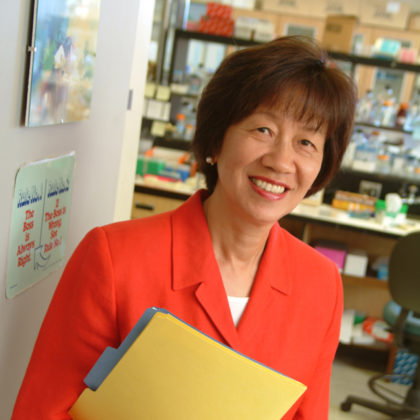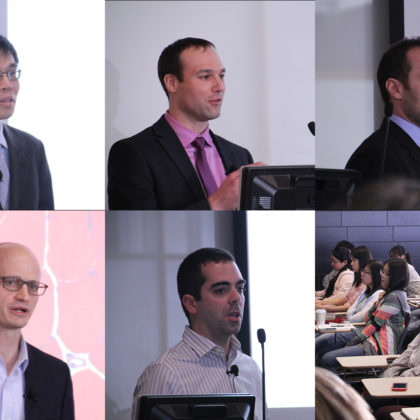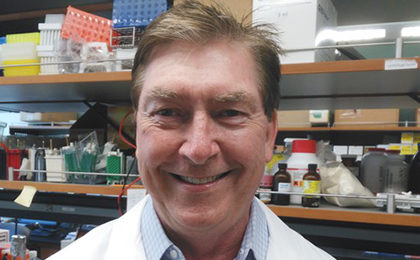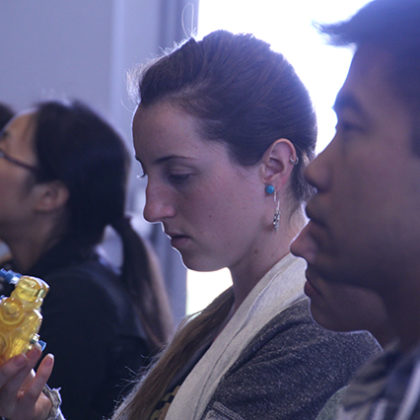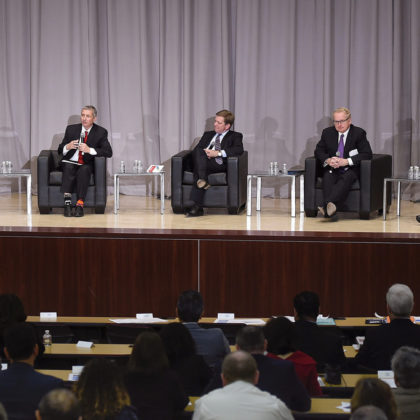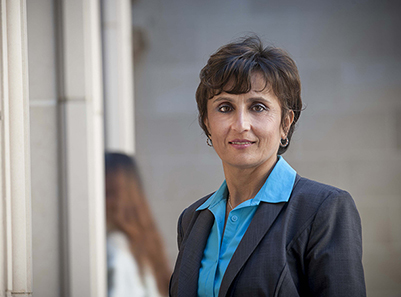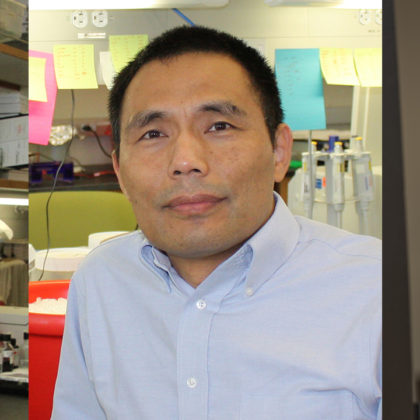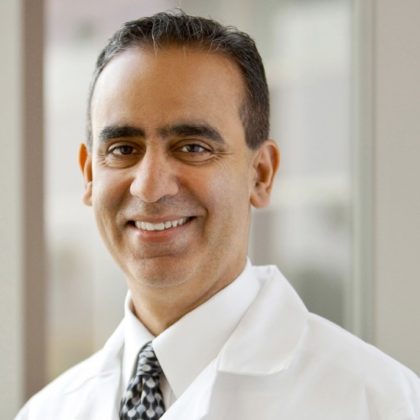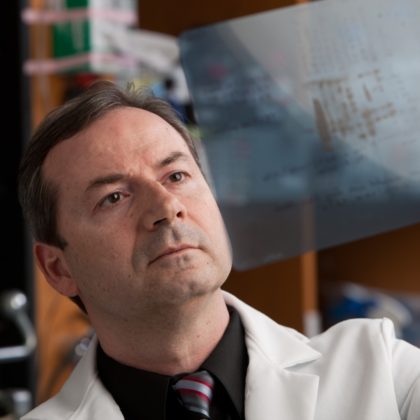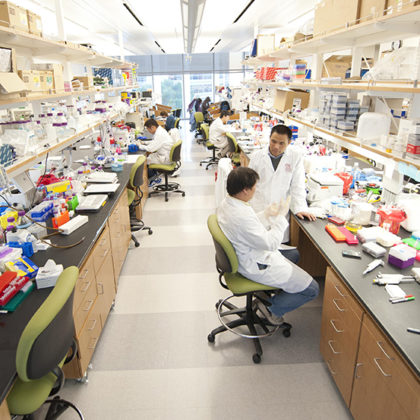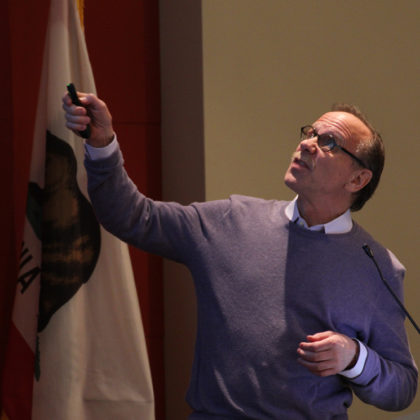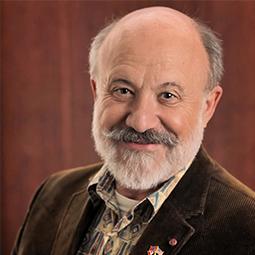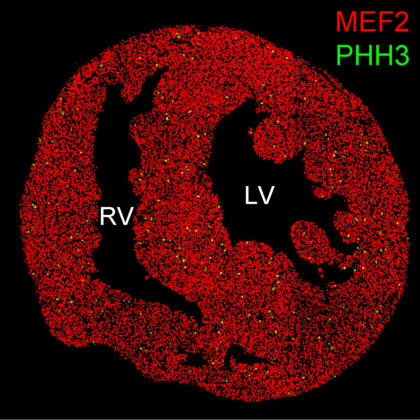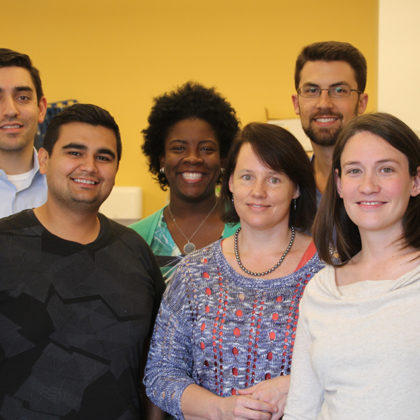USC researcher plucks hair to grow hair
If there’s a cure for male pattern baldness, it might hurt a little. A team led by USC Stem Cell Principal Investigator Cheng-Ming Chuong has demonstrated that by plucking 200 hairs in …
Peti-Peterdi is inducted into prestigious honor societies
Pioneering Keck Medicine of USC scientist Janos Peti-Peterdi, MD, PhD, received congratulations in early March in Salzburg, Austria, from Austrian President Heinz Fischer upon his induction into the European Academy of Sciences …
The Doerr Stem Cell Challenge Grants 2015–2016
To stimulate interdisciplinary stem cell research across USC Overview USC Stem Cell invites applications for the Doerr Stem Cell Challenge Grants. The goal of the program is to stimulate new interdisciplinary stem …
Discovery could lead to biological treatment for common birth defect
Throughout every human and animal’s body, stem cell populations are responsible for the growth, regeneration and repair of tissues. While the power of some types of stem cells is already being used …
Promising new target may treat pulmonary fibrosis
By uncovering the mechanism by which fibrous tissue cells in the lung multiply, researchers at The Saban Research Institute of Children’s Hospital Los Angeles (CHLA), along with colleagues in Mexico and Canada, …
Faculty Spotlight: Amy S. Lee
Amy S. Lee’s major research focus is in the area of endoplasmic reticulum (ER) stress and, in particular, the ER chaperone proteins GRP78 and GRP94. Lee was the first to clone human …
USC mini-symposium showcases the next generation of top stem cell scientists
Obesity, narcolepsy, leukemia and muscle injuries have at least one thing in common: they are engaging the next generation of top stem cell scientists. Five of these scientists presented their research at …
Faculty Spotlight: David R. Hinton
David Hinton’s research is focused on developing novel therapies for age-related macular degeneration (AMD) – the leading cause of irreversible blindness in the elderly. He is approaching this goal in two main …
CIRM-funded clinical trial aimed at blocking HIV/AIDS in people gets the go ahead
An innovative therapy using a patient’s own stem cells, modified to resist infection with the AIDS virus, has been given approval by the Food and Drug Administration (FDA) to begin a clinical …
“Million-dollar ideas” seminar
At a special seminar on February 24, USC Stem Cell Principal Investigators discussed their “million-dollar ideas” for creating new tools and technologies to usher in the era of regenerative medicine. They shared …
USC summit marks rebirth of biotech era in Los Angeles
Los Angeles city and county policymakers and educational institutions laid the groundwork for the region’s biotechnology strategy at a summit on the USC Health Sciences Campus. The Los Angeles Biotech Summit drew …
Janet Moradian-Oldak Receives 2015 IADR Innovation in Oral Care Award
USC Stem Cell principal investigator Janet Moradian-Oldak has earned a 2015 IADR Innovation in Oral Care Award. The prestigious award, which can be worth up to $75,000 and lasts one year, was …
Three USC researchers win $4.3 million in awards from California’s stem cell agency
Three scientists from Keck Medicine of USC have won grants exceeding $4.3 million from the California Institute for Regenerative Medicine (CIRM) for research that includes creating a temporary liver for patients, finding …
New option benefits patients needing bone marrow transplants
Keck Medical Center of USC is offering a new option for patients who need bone marrow (also called stem cell) transplants, but have not found a match. Haploidentical transplants allow patients who …
Protein-based therapy shows promise against resistant leukemia
Resistance of leukemia cells to contemporary chemotherapy is one of the most formidable obstacles to treating acute lymphoblastic leukemia (ALL), the most common form of childhood cancer. Now researchers at Children’s Hospital …
The Hearst Foundations establish stem cell fellowships at USC
It takes more than materials and methods to be a successful young scientist — it also takes means. With this in mind, the Hearst Foundations have given a gift of $250,000 to …
USC Stem Cell Symposium creates scientific synergy
Provost Michael Quick convened the inaugural USC Stem Cell Symposium with a straightforward truth about the future of regenerative medicine: “it will take a dedicated community of scholars across the disciplines to …
David Warburton’s new book explores current state of regenerative medicine
From offering new cancer-fighting options to re-growing damaged organs and nerves, regenerative techniques have a use in nearly every area of medicine. These diverse applications are explored in the new book Stem …
Mammalian heart regenerative capacity depends on severity of injury
A new study by researchers at Children’s Hospital Los Angeles (CHLA) has shown that neonatal mouse hearts have varying regenerative capacities depending upon the severity of injury. Using cryoinjury — damaging the …
Researchers grow functional intestine from human cells
A new study by researchers at Children’s Hospital Los Angeles has shown that small intestine grown from human cells replicates key aspects of a functioning human intestine. The small intestine they developed …
